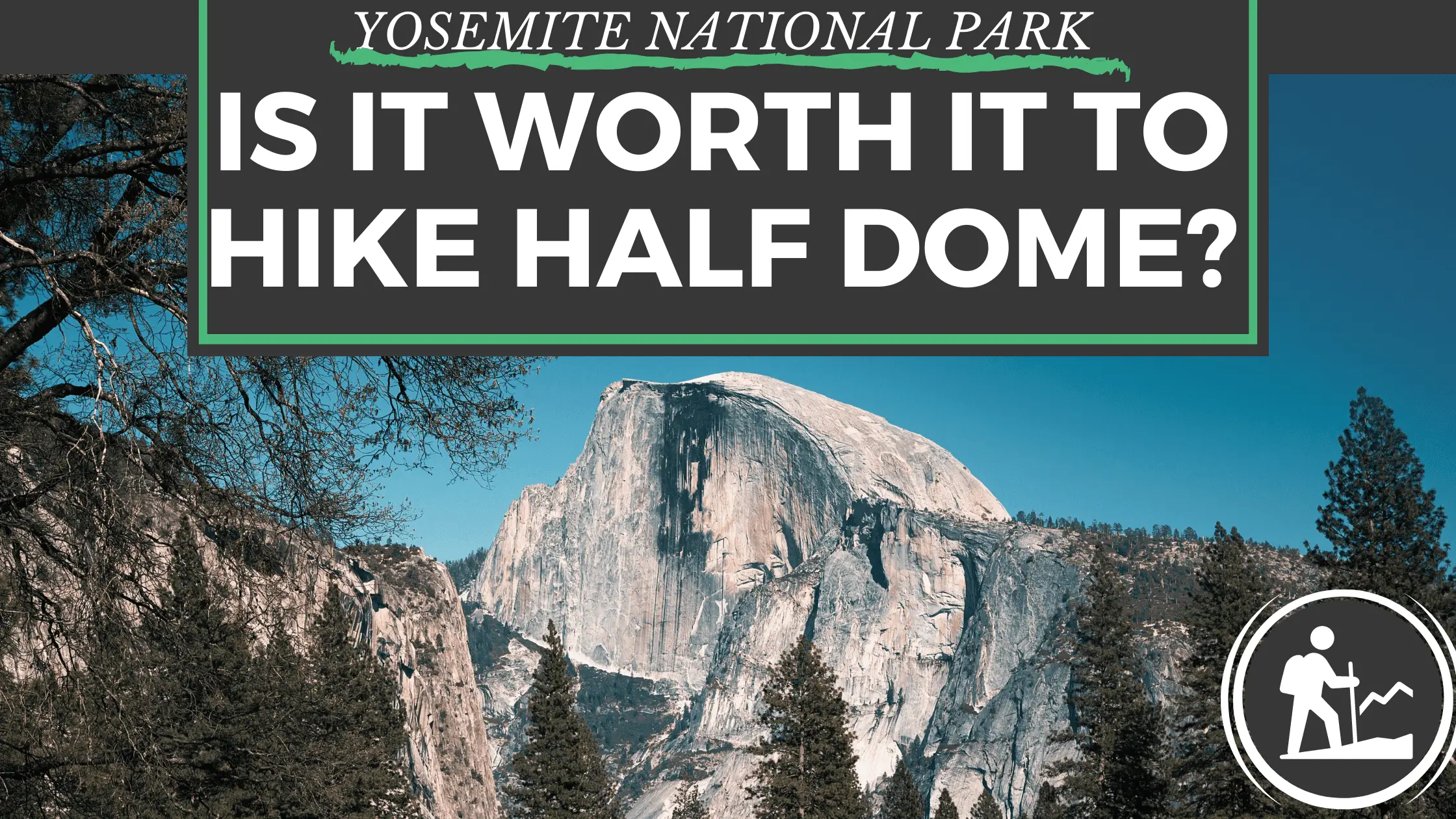The Half Dome hike has been one of Yosemite’s toughest and most unforgettable treks. You’ll get to stroll on some of Yosemite’s best trekking paths, see the Vernal and Nevada Falls, and walk through a shady Sequoia grove on this journey.
So, is it worth it to hike in Half Dome? Read on to find out!
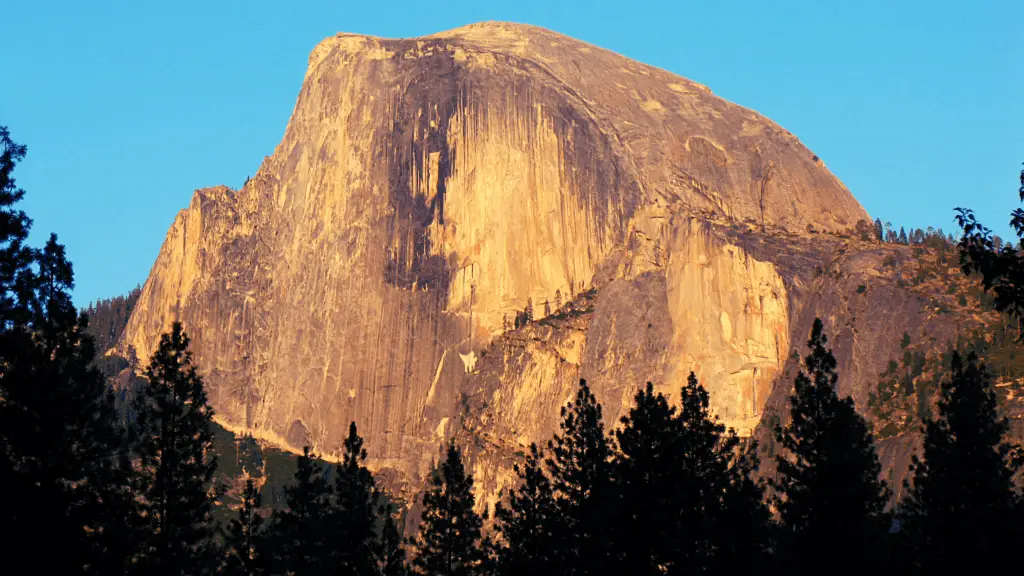
Is It Worth The Hike?
Yes! Many travelers have hailed hiking Yosemite’s Half Dome Cables Route as amazing and even life-changing. However, this is not a trip for the faint of heart. The path is approximately 14 to 16 miles long, with a total elevation increase of 4,800 feet.
After reaching the dome’s base, a difficult rocky climb leads to the Half Dome Cables, a sheer, exposed rock wall accessed by two steel cables.
Don’t climb the wires if you’re terrified of heights or aren’t in good physical shape. Many of the dome’s gentler aspects may still be enjoyed, like the trek to Nevada Fall.
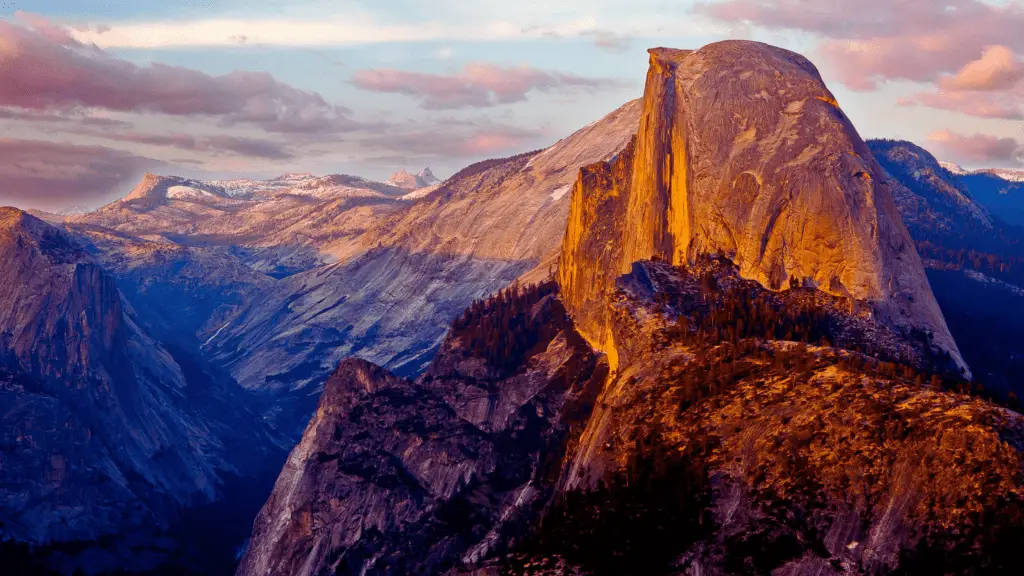
About Half Dome
This granite dome structure at the eastern edge of the Yosemite Valley, known as Half Dome, is easily the most identifiable feature in Yosemite. It is possibly the most prominent rock feature in the park, if not the entire country. Half Dome gets its name from its sheer face, which gives it the impression of a big rock that has been sliced in half.
The climb to Half Dome and return takes 10 to 12 hours; some take longer. If you’re trekking during the day, start at sunrise (or even earlier) and set a non-negotiable turnaround time. When you haven’t reached the summit of Half Dome by 3:30 p.m., for example, you should turn around.
Before going on a trek, check the dawn and sunset hours. Regardless, each hiker should have a flashlight or headlamp with fresh batteries (hikers who don’t have a torch sometimes struggle to find their way down the trail after dark). Despite the well-marked track, you need to have a decent topographical map and compass and know-how and when to use them.
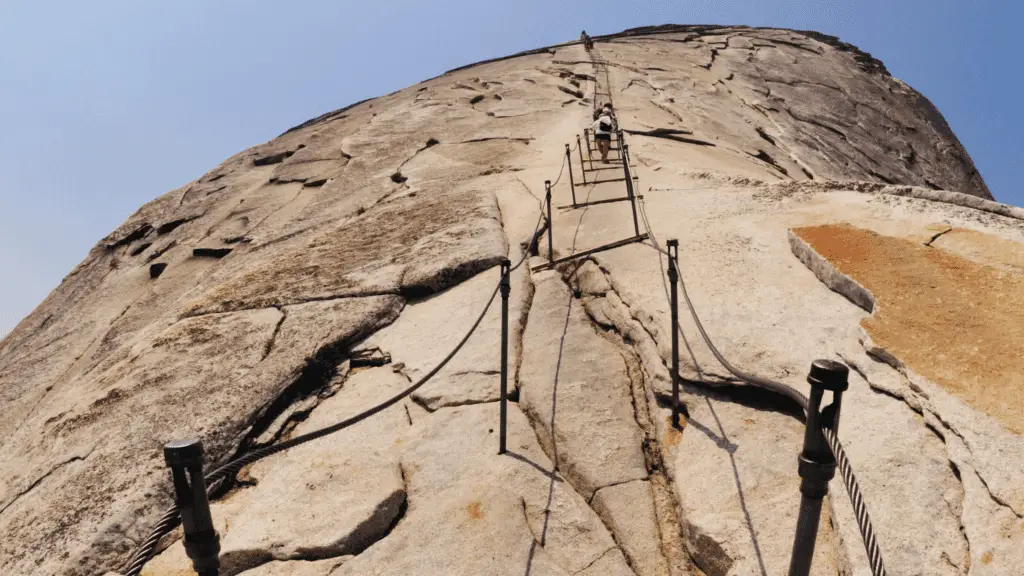
The Half Dome Cables
The trek up the wires is the hike’s most famous—or infamous—part. Thanks to the two metal wires, hikers can ascend the last 400 feet to the peak without using rock climbing gear. Since 1919, few people have perished after falling through the wires. On the other hand, injuries are not prevalent among individuals who conduct carefully.
In addition, the Half Dome cables are regularly re-installed the Friday before Memorial Day (the last Monday in May) and de-installed the day after the second Monday in October (Columbus Day). These dates are prone to revision depending on the circumstances.
When utilizing the cables, keep the following in mind:
- Take your time and be patient with hikers who are slower than you.
- Allow hikers who are faster than you to pass you (If possible)
- Maintain your position inside of the cables.
If you have any of the following conditions, you should not undertake the climb:
- There are storm clouds in the region.
- The ground is moist
- The wires have been turned off for the season. Check the status and any available updates in the conditions update.
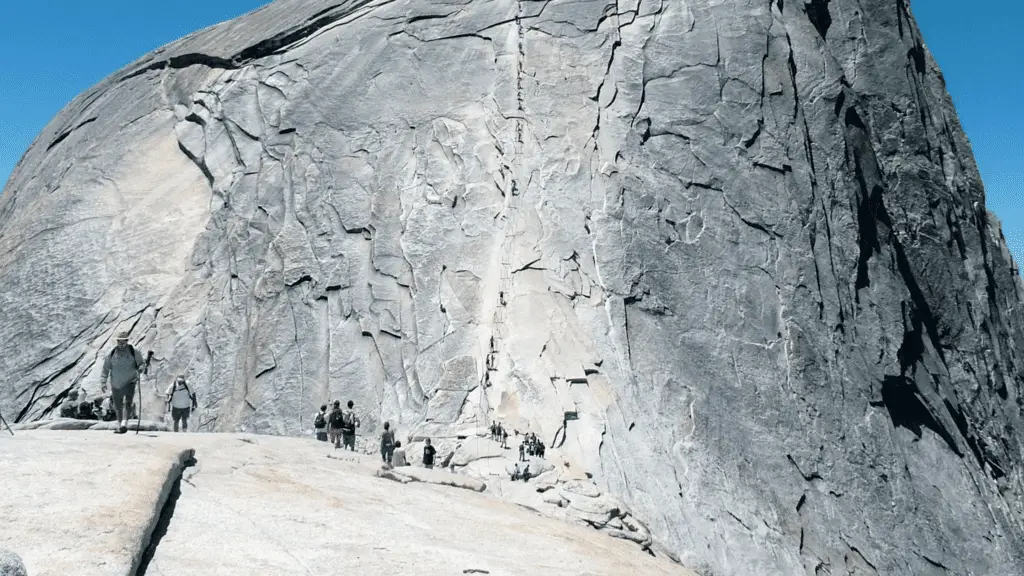
Preparation For Half Dome
When hiking Half Dome, having the appropriate equipment might make all the difference. Here’s what we bring and what we’ve been relying on for years:
Sunscreen
There is very little cover on the trek to Half Dome, and the heat is scorching most of the year! Check out this Neutrogena sunscreen.
Gloves for the wires
If you want to get to the very top, you’ll need these. Having great gripping gloves may make all the difference. Look into these G & F Products Gloves.
Footwear
Bring well-worn footwear with a strong grip and ankle support. Blisters and ankle injuries are two major injuries Half Dome hikers suffer; proper footwear is the great way to stop these issues.
Water
Having sufficient water is one of the simplest methods to ensure a safe and pleasurable trek. The quantity of water you require depends on the weather and your particular preferences; however, the following are recommended minimum amounts per person:
- When trekking to the summit of Half Dome, bring 1 gallon (4 liters) of water.
- If you’re going to the top of Nevada Fall, bring 2 quarts (2 liters) of water.
- If you’re planning to go to the top of Vernal Fall, bring 1 quart (1 liter) of water.
Only purified water is provided on the trail (summer only) at the Vernal Fall Footbridge’s drinking fountain (less than a mile from the trailhead). Water from the Merced River is generally available to Little Yosemite National park, although it should be treated by boiling, iodine, or a giardia-rated water purifier. The use of untreated river water might result in serious sickness.
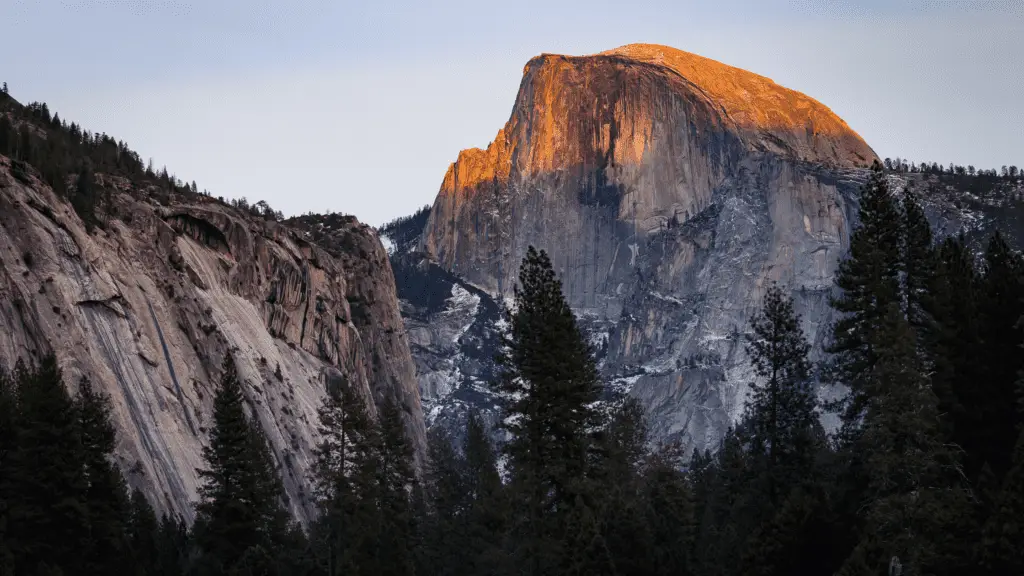
What kind of views will you see at the top of Half Dome?
Half Dome is a well-known granite mountain that you may recognize from the Mac desktop screensaver. It’s one of the most easily recognizable landmarks in California, right up there with the Golden Gate Bridge, and if you haven’t seen it in person, you should.
Here are the popular viewpoints in Half Dome:
Top of Half Dome Itself
Get on top and gaze over the edge if you want to view this unusual rock. Half Dome is much larger on top than one may expect, and standing atop it and looking out over the valley is incredible. However, this is a really difficult hike, so don’t take it lightly.
Glacier Point
Because you are right across from Half Dome, Glacier Point is the most renowned and uninterrupted sight. Along with its size, the valley between you makes a wonderful foreground for photographs. Since you can see the contour of Half Dome beneath the sky, this is the finest site for stargazing.
It’s also a popular sunset site, where you can capture the final rays of sunlight on Half Dome. Overall, it’s arguably the finest spot for a view.
Washburn Point
Washburn Point is only about a mile from Glacier Point offers a stunning and unique vista of Half Dome. It is a little farther to the side than Glacier Point, so the dome isn’t as distinct as you’d think. However, it is still a fantastic way to view the Yosemite wilderness.
Mirror Lake
Mirror Lake, a short trek in Yosemite Valley, provides the next vantage point. You can see Half Dome’s face from below from this vantage point. It’s one of the most distinctive vistas since you’re standing on a ledge with a shallow perspective point, allowing the rock to stand out.
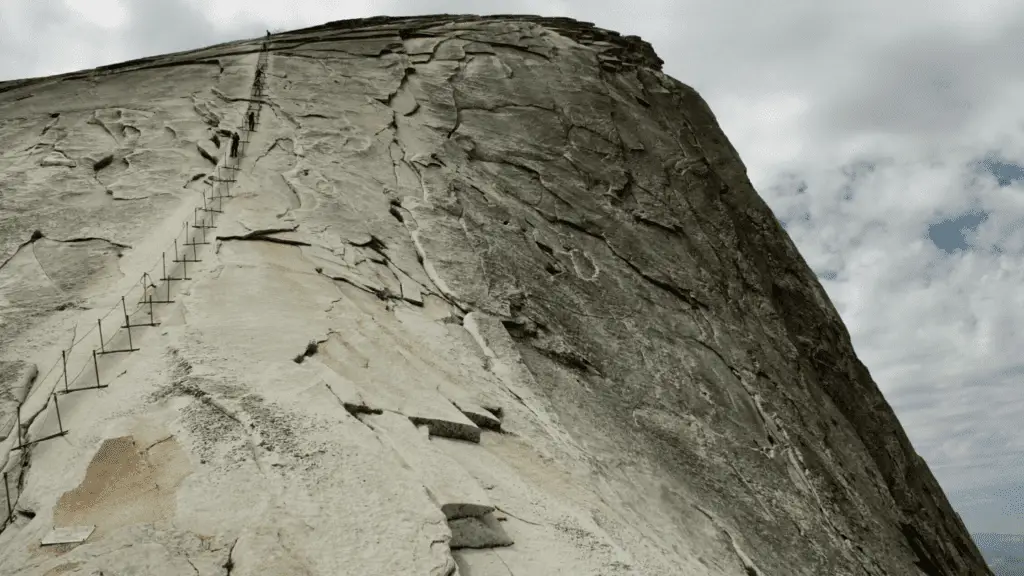
Can the average person hike Half Dome?
If you have health problems or are out of shape, the 14- to 16-mile round-trip climb to Half Dome isn’t for you. Hikers will spend the majority of the route to the summit of Half Dome climbing elevation (a total of 4,800 feet). The payoff, most people would say, is well worth the effort. If you’re qualified for the trek, make sure you’re prepared and have the supplies you need.
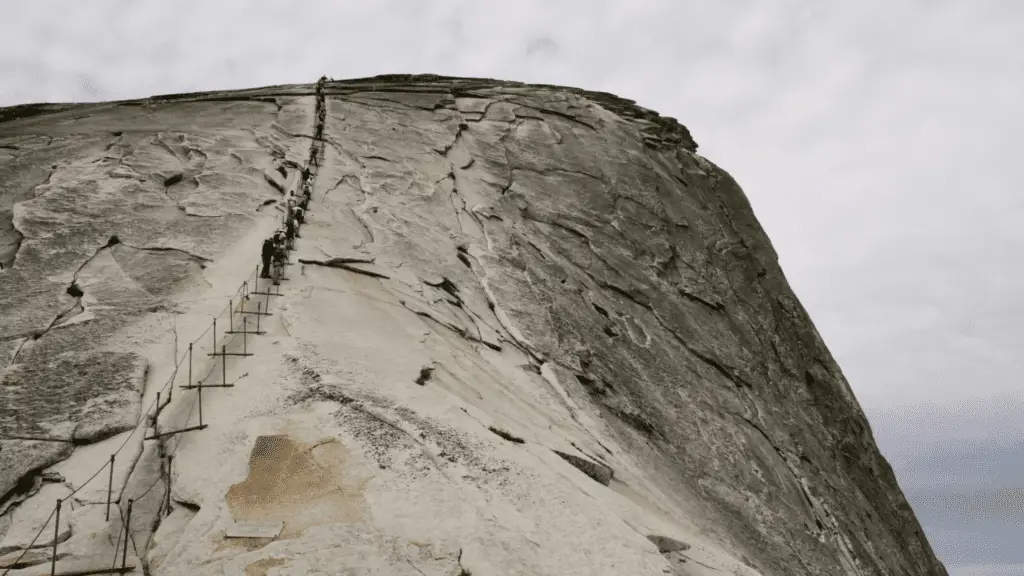
Is a permit needed to hike Half Dome?
Yes, even in the middle of nowhere, bureaucracy may be the stumbling block to the top! Simply possessing your permit isn’t enough; the ranger will also want picture identification of the person who made the reservation, so bring it with you! You should be able to pass with a picture of your passport or driver’s license.
Several individuals had a reservation but were kept away due to a lack of identification. You aren’t examined until the Sub Dome (approximately 0.5 miles from the peak), which is very soul-crushing. So better have those requirements before leaving your house!
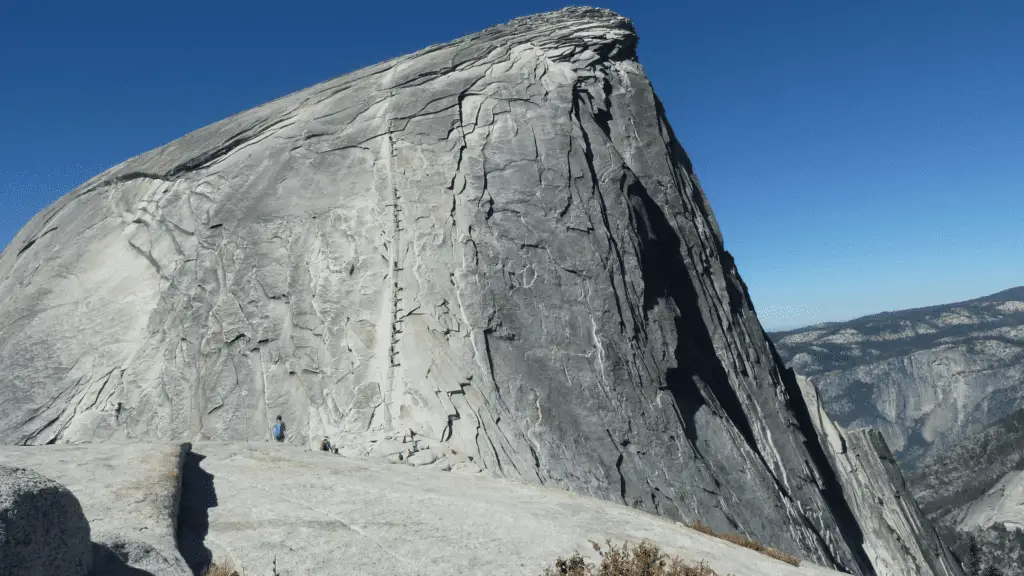
When’s the best time to hike Half Dome?
The greatest time to hike Half Dome is when permits are available. Cables are installed the Friday before Memorial Day for the winter and removed following Columbus Day. Depending on the weather, this might change from year to year.
Apply for a permit on a Tuesday, Wednesday, or Thursday for the highest chances in the Half Dome Permit Lottery. On weekends, your chances are three times lower.
If you’re asking what time, start at 3 a.m. if you want to beat the cable lines! That’s right, you read it accurately. The only way to assure that you will beat the cable lines is to arrive before sunrise. Allowing 4-5 hours to hike the trail means getting up at 3 a.m. The lines on the cables begin to form early in the morning, and by 10 a.m.
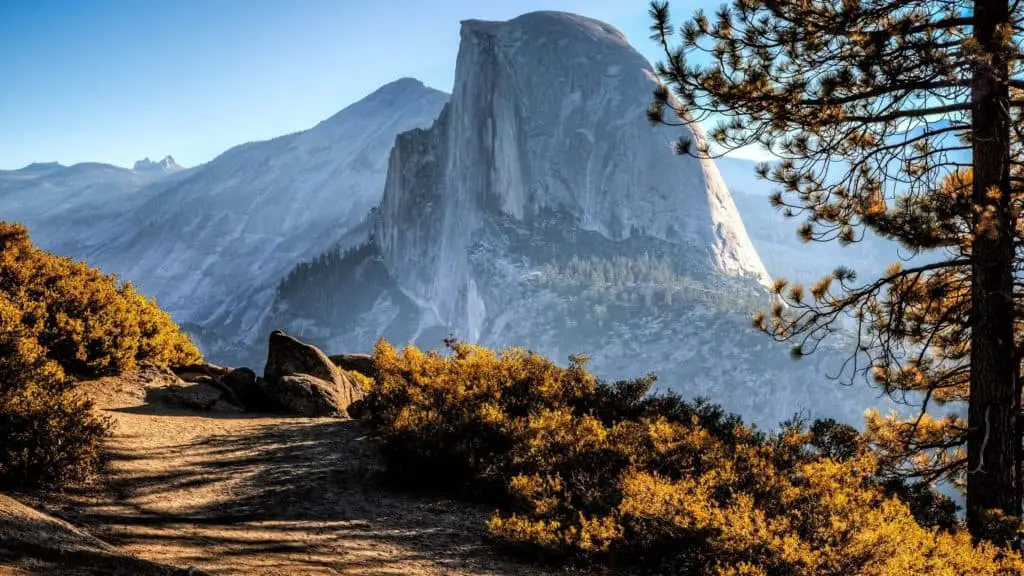
Bottom-line
The Half Dome trek, as previously stated, is a lovely path and one of the hikers’ favorite Yosemite activities.
It will undoubtedly be one of the most rewarding hikes you will ever undertake if you can accomplish it. Even if you turn around, take pride in being one of the few people who get to experience Half Dome in this way, even if you are afflicted with summit fever.
When you’re planning to try it again, coming with gear and a few intense weight-lifting sessions will improve your hiking experience.

